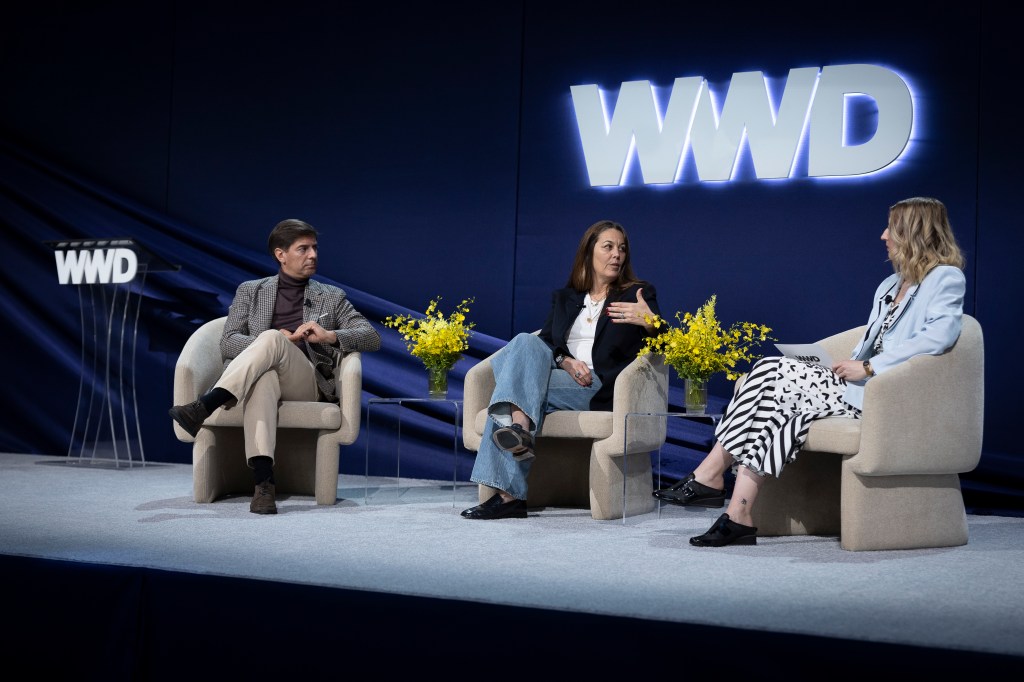In fashion, the saga around sustainability continues: too much product, not enough inventory planning, too many individual efforts and not enough focus on solutions at the raw material level.
But at this year’s WWD Apparel & Retail CEO Summit, it was clear companies may be focusing more on quality raw materials and a quality of consideration for what fashion can put back into the environment for all that it has taken.
Building on its nearly 90-year history and values, Canali president and chief executive officer Stefano Canali said, in the company’s effort to investigate its practices to see where it could improve on impact, he was reminded that durability and circularity are among the biggest drivers of positive change.
“Whatever is durable is more sustainable by definition,” he said, speaking on a panel moderated by Kaley Roshitsh, editorial director of the Sustainable Apparel Coalition. “The fact that we always decided to stick to a sartorial craftsmanship, that helps us a lot. Whatever is sartorial can be easily altered over time and can be fortified according to the needs of the customer and allows for durability.”
As part of Canali Care, a project the company launched earlier this year, Canali spent nearly two years doing life cycle assessments and digging into its organizational environmental footprint as well as its product environmental footprint, and found that as much as two-thirds of its carbon footprint comes from raw materials. That means, as Canali noted, the leading solutions are either to recycle and use recycled fabrics — though what’s on offer remains small and “not up to the level that we demand from our suppliers,” he said — or invest in inventing a new fiber that becomes a viable solution.
“Everybody is very much interested in finding a solution but…we have to team up in order to tackle this topic,” Canali said.
Teaming up has long been in demand among those really pushing to find sustainable solutions in fashion as opposed to those with a slightly greater interest in being the one to find it. But still, too few companies and organizations are really working in conjunction.
Amy Williams, CEO of Citizens of Humanity Group, is tapping into an industry network built over her 30-year career in hopes of beginning to right that.
“We’re small relative to brands that I’ve worked with…so I think the biggest challenge is making sure we have a voice. Within our denim supply chain that’s fairly easy,” she said. “For the other categories and product that we run, from knits to woven shirting to woven bottoms, it was harder. We were really small and we were talking to big people like Parkdale [Mills] and others…I started reaching out to people at different companies, and while there was no necessarily immediate value of doing so, talking to folks that I used to work with at the Gap…from American Eagle or colleagues at Aritzia or other brands, made the idea of actual impact possible. That, to me, turned what was a challenge into something that’s an opportunity for all of us.”
Where Citizens of Humanity is focused for now is something that, despite her long tenure in fashion, Williams said she never really focused on before: “the impact that raw material sourcing has on climate change and other issues that we currently face.”
Things changed for her after one of Citizens of Humanity’s mill partners recommended she watch “Kiss the Ground,” a documentary featuring and narrated by Woody Harrelson, which finds that regenerating the world’s soils “can completely and rapidly stabilize Earth’s climate, restore lost ecosystems and create abundant food supplies,” according to the film’s website.
“For the first time, rather than thinking about doing what we were doing and having a lesser impact, I realized that with the process of regenerative agriculture, we could actually both lessen our impact and actually change the impact and improve the soil health and biodiversity and carbon sequestration in a way that I never realized and recognized,” Williams said.
She pointed to General Mills and Walmart’s October announcement that they have joined forces to “advance regenerative agriculture across 600,000 acres by 2030,” as evidence of things moving more rapidly in that direction.
In its own efforts to advance in the area, Citizens of Humanity met challenges finding regenerative farmers that were able to transition as quickly as they would have liked as too few brands were yet supporting that change.
“We just decided to go on the ground to be able to secure what we thought was the right raw material source,” Williams said. “We believe wholeheartedly, if the food industry and the apparel industry, both in cotton and wool products, can migrate to regenerative practices, we can both reverse the results of all that we’ve done in the last couple of years and look towards a future that is much brighter than the one we currently sit in.”


